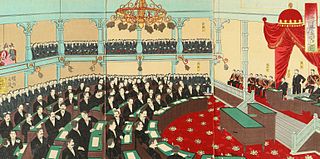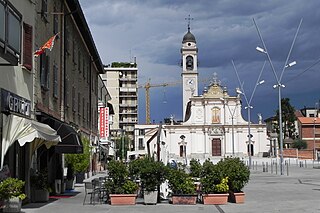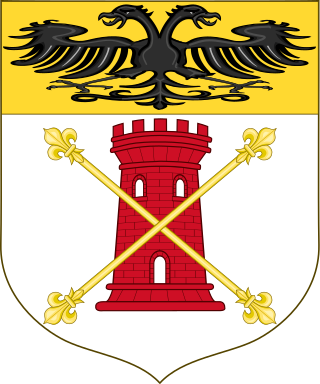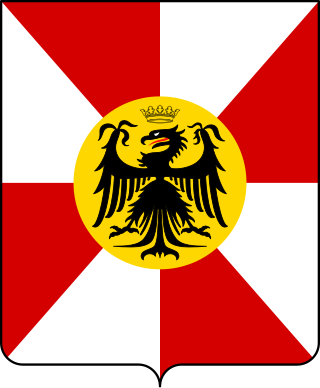Origins
An ancient tradition derives the lineage of Aliprandi from the great Lombard King Liutprand (712-744). Documentation of this link consists of ancient manuscripts and other sources. The derivation of the Lombard royal lineage is attested by an inscription dated 1131 in the Church of Santa Maria delle Grazie in Monza, published by eminent historians such as Cantù and Giulini and admitted as proof of nobility for the reception in Order of Santo Stefano and Noble College of Giureconsulti in Milan.
The family Aliprandi was feudal in the eponymous village, which was an independent municipality until the late 19th century, when it was annexed to the city of Lissone.
In Milan, the family appears in the list of noble houses that draw from Ottone Visconti in 1277. Giovanni Aliprandi (1220) begat three sons, Arnolfo, Garibaldo and Bertarino, grandfather of Enrico, Lord of Monza. Giovannolo became the immediate vassal (with the rank of nobility, eminent) of Count Palatine and noble of the Holy Roman Empire with his brothers, his nephew and descendants of Emperor Charles IV of Holy Roman Empire on May 15, 1355.
Other Branches
In Verona, a branch appeared in the 15th century as heir to the name and substance of the canon and the Count Palatine Bartolomeo Cartolari. The surname of Cartolari was ascribed to the Noble Council in 1524 and still flourishes in the same city as the best-known survivors of the branches of the lineage of Aliprandi.
The nobleman Giulio Cesare Aliprandi, son of Gaspare Aliprandi, brother of Luigi in 1587 received the Order of Santo Stefano, was admitted in 1584 with proof of nobility in the college of Nobles Giureconsulti of Milan. That branch of the family continues to live in Ferrara.
The branch of Abruzzo became extinct in 1910. It had descended from Count Paolo di Bonifazio di Giovannolo, started in Penne by Giovanni Aliprandi. Giovanni was Treasurer of Margaret of Habsburg daughter of Emperor Charles V, had various fiefdoms including Nocciano.
Giovanni Aliprandi married Valentina Visconti, the daughter of Barnabò Visconti, Lord of Milan. Giovanni was banned from Milan banned for political reasons in 1413, giving rise to another branch in Treviso.

Monza is a city and comune (municipality) on the River Lambro, a tributary of the River Po, in the Lombardy region of Italy, about 15 kilometres north-northeast of Milan. It is the capital of the province of Monza and Brianza. Monza is best known for its Grand Prix motor racing circuit, the Autodromo Nazionale di Monza, which hosts the Formula One Italian Grand Prix.

The Kazoku was the hereditary peerage of the Empire of Japan, which existed between 1869 and 1947. They succeeded the feudal lords and court nobles, but were abolished with the 1947 constitution.

The Visconti of Milan are a noble Italian family. They rose to power in Milan during the Middle Ages where they ruled from 1277 to 1447, initially as Lords then as Dukes, and several collateral branches still exist. The effective founder of the Visconti Lordship of Milan was the Archbishop Ottone, who wrested control of the city from the rival Della Torre family in 1277.

The Bentivoglio family was an Italian noble family that became the de facto rulers of Bologna and responsible for giving the city its political autonomy during the Renaissance, although their rule did not survive a century.

Vimercate is a comune (municipality) in the province of Monza and Brianza, in the Italian region of Lombardy. It is 25 kilometres (16 mi) from Milan and 10 kilometres (6 mi) from Monza.

The nobility of Italy comprised individuals and their families of the Italian Peninsula, and the islands linked with it, recognized by the sovereigns of the Italian city-states since the Middle Ages, and by the kings of Italy after the unification of the region into a single state, the Kingdom of Italy.

Prince of Belmonte is a noble title created in 1619 by the Spanish crown for the Barons of Badolato and Belmonte. The name of the title is taken from the fortress town of Belmonte in Calabria, historically important for the defence of the Italian coast from Saracen invasion. Belmonte has been known since the Risorgimento as Belmonte Calabro.

Cinisello Balsamo is a comune (municipality) of about 75,200 inhabitants in the Metropolitan City of Milan, in the Italian region of Lombardy, about 10 kilometres (6 mi) northeast of Milan city center.
Cesana Brianza is a municipality of 2,393 inhabitants in the Province of Lecco in Lombardy, about 40 kilometres (25 mi) north of Milan and 9 kilometres (5.6 mi) southwest of Lecco.

The House of Carrara or Carraresi (da Carrara) was an important family of northern Italy in the 12th to 15th centuries. The family held the title of Lords of Padua from 1318 to 1405.

The House of Della Torre were an Italian noble family who rose to prominence in Lombardy during the 12th–14th centuries, until they held the lordship of Milan before being ousted by the Visconti.

The Turco, Turchi, Turci or sometimes Turco dei De Castello family's rise to prominence originated in 12th-century Asti, Italy, and later the surrounding comunes of Frinco, Mombercelli, Montemagno, Tonco, Viale, and in part Barbaresco, Neive, Revigliasco d'Asti and Savigliano. They are considered one of the "Casane Astigiane", the major familial banking "houses" that powered the economy of medioeval Asti.
Bonacossa Borri, also known as Bonaca, or Bonaccossi Bonacosta (1254–1321), was Lady of Milan by marriage from 1269 to 1321.
Squarcino Borri, also called Scarsini (1230–1277), was an Italian condottiero and lord of the lands of Santo Stefano Ticino.

Oratory of Saint Stephen (Italian: Oratorio di Santo Stefano is a Roman Catholic chapel in the town of Lentate sul Seveso, in the Province of Monza and Brianza and the region of Lombardy, Italy.

Martino Aliprandi was an Italian lawyer and mayor of the 14th century.

Giovanni Aliprandi was an Italian nobleman. He was Count Palatine and captain of the Holy Roman Empire and lived in Milan, in the parish of San Simpliciano.

The papal nobility are the aristocracy of the Holy See, composed of persons holding titles bestowed by the Pope. From the Middle Ages into the nineteenth century, the papacy held direct temporal power in the Papal States, and many titles of papal nobility were derived from fiefs with territorial privileges attached. During this time, the Pope also bestowed ancient civic titles such as patrician. Today, the Pope still exercises authority to grant titles with territorial designations, although these are purely nominal and the privileges enjoyed by the holders pertain to styles of address and heraldry. Additionally, the Pope grants personal and familial titles that carry no territorial designation. Their titles being merely honorific, the modern papal nobility includes descendants of ancient Roman families as well as notable Catholics from many countries. All pontifical noble titles are within the personal gift of the pontiff, and are not recorded in the Official Acts of the Holy See.

The House of Malaspina was a noble Italian family of Longobard origin that descended from Boniface I, through the Obertenghi line, that ruled Lunigiana from the 13th to the 14th centuries, and the marquisate of Massa and lordship of Carrara since the 14th century.
The Stampa family are a well-known family of old Italian nobility that rose to prominence in the 15th century. They were Grandees of Spain, members the Order of the Golden Fleece and owned many estates throughout the Italian Peninsula, including a Castle in Soncino, a Palace in Milan, and countless others in Muggiò, Melzo, Gorgonzola, Rivolta d'Adda, Ferentino and Rome. They are related to some of the most important Italian noble houses, such as the Doria, Sforza, Gonzaga, Borromeo and Visconti.



















